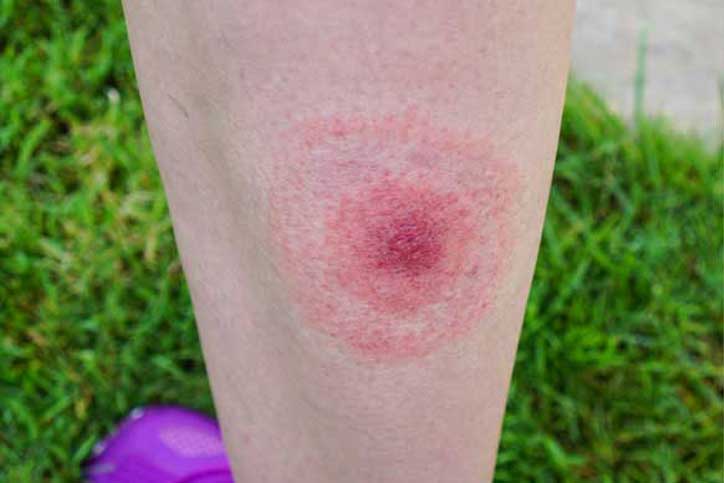 Lyme disease is not something that most people expect to get but for those with a love of nature and the great outdoors, it can be easily transmitted following a bite from a tick. It is prevalent in wooded areas and anyone who spends a great deal of time outside – children or those adults who love hiking etc. are all at risk and therefore, observation is key. The best defense is through covering up. It’s less easy for ticks to penetrate the skin when long trousers are worn, and long-sleeved tops can help prevent the tick from accessing bare skin. Where possible, stick to designated trails, avoiding walking through areas with long grass or bushes. It can help to use insect repellents, spraying onto clothes which should deter ticks but, they can cling to clothes for long periods of time so it’s best to double-check after being outside. Time is of the essence when it comes to removing ticks and as they are so small, it is important to do a thorough search. If a tick is embedded, remove carefully with tweezers ensuring the whole tick is removed. Apply antiseptic directly to the bite afterward.
Lyme disease is not something that most people expect to get but for those with a love of nature and the great outdoors, it can be easily transmitted following a bite from a tick. It is prevalent in wooded areas and anyone who spends a great deal of time outside – children or those adults who love hiking etc. are all at risk and therefore, observation is key. The best defense is through covering up. It’s less easy for ticks to penetrate the skin when long trousers are worn, and long-sleeved tops can help prevent the tick from accessing bare skin. Where possible, stick to designated trails, avoiding walking through areas with long grass or bushes. It can help to use insect repellents, spraying onto clothes which should deter ticks but, they can cling to clothes for long periods of time so it’s best to double-check after being outside. Time is of the essence when it comes to removing ticks and as they are so small, it is important to do a thorough search. If a tick is embedded, remove carefully with tweezers ensuring the whole tick is removed. Apply antiseptic directly to the bite afterward.
In the US, approximately 30,000 cases are reported but this may not be the extent of the problem and it is anticipated that up to 329,000 people could be affected by Lyme disease each year. Transmitted via black-legged or deer ticks, the bacteria are called Borrelia burgdorferi and borrelia mayonii. For the Lyme disease to occur, an infected tick must bite, and the bacteria pass through the skin into the bloodstream. Vigilance is important because the tick would have to be attached for a prolonged period – between 36-48 hours and although you would think that the ticks would be obvious, these ticks are more noticeable when have been feeding and by then, with their swollen body’s, they are likely to have already passed the bacteria into the bloodstream. It can take a while for symptoms to manifest but, it’s best to seek medical advice as soon as is possible.
Symptoms include:
- Fever
- A headache
- Chills
- Fatigue
- Joint pain
- Muscle pain
- Swollen lymph nodes
- Rash
If it is not treated, complications can occur such as:
- Facial palsy
- Neuropathy
- Lyme arthritis
- Impaired memory
- Heart rhythm issues
These symptoms can increase substantially causing arthritic pain and swelling, usually in the knees. There may be a severe headache and stiffness in the neck area. Heart palpitations may be experienced and muscle tone sagging with facial drooping. Later, inflammation of the brain and the spinal cord with shooting pains or tingling in the feet and hands or both.
Treatment in the early stages will usually ensure full recovery.
Stem cell therapy can be used to help with the stimulation of new cells and this can be useful to replace those that have been damaged or lost by the Lyme disease infection. Consider them the building blocks where they can help to regenerate. They can also prevent or reverse neurological damage and even, eliminate the bacteria.
Kelly Osbourne contracted a rare form of Lyme’s disease and even though the tick was removed, years later, following a long illness, she was finally diagnosed as having stage 111 neurological disease. After many different types of treatment and medication, she underwent stem cell therapy, “so my body could fight off and get rid of the disease on its own.” She did it for two weeks, and says she was experiencing emotions and feelings again.
Lyme disease has long-lasting implications on those who are infected. Even when the tick is removed quickly, the damage can be done. Prevention through observation and covering up is key but, if infected with Lyme disease, there is hope with stem cell therapy in that it can help with the healing process.











Sorry, the comment form is closed at this time.